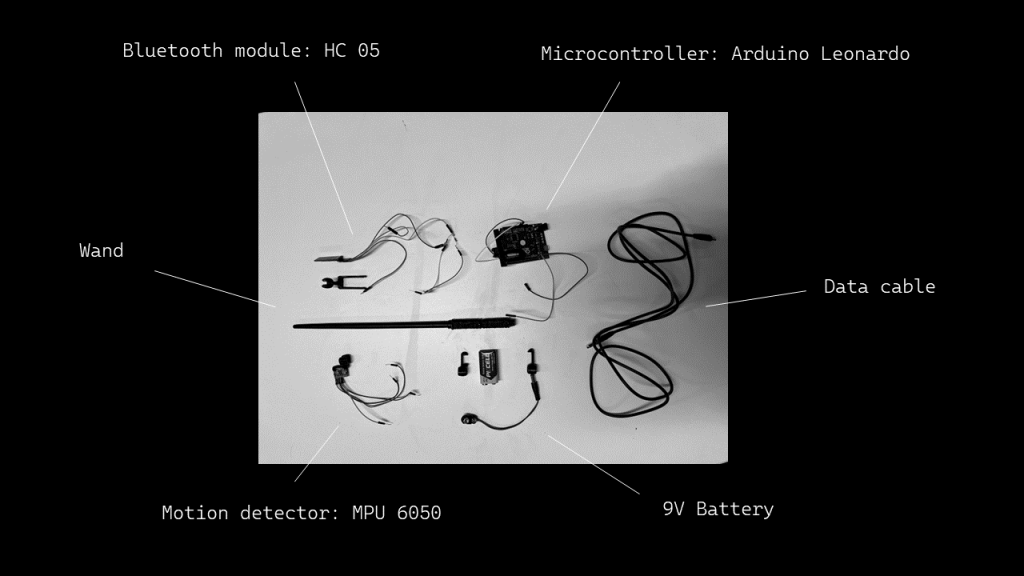2024 Project
In GoldSmiths, University of London.

Infinite wand project is my personal exploration of what “magical” interaction between human and machine.
Infinite Wand Project is an attempt at wand interaction. In this project, I modularized components to transform a Harry Potter wand toy into an interactive form with computer programs. Through various methods, I achieve effects such as a floating feather in a Unity scene, aiming to transform traditional keyboard and mouse interface interactions into a spellcasting process and achieve a completely different interactive experience.
The project can currently be divided into 2 parts. Part 1 is about using physical computing to achieve wand interaction. Part 2 is about using machine learning to create different motion feedbacks.
Production and Testing of the Machine Learning Component of the Project
I found a Harry Potter wand toy on my desk.
It’s necessary to create an interactive way to cancel button actions, which will make the experience more enjoyable, Especially against the backdrop of the development of machine learning technology.
I hope the human-machine relationship can be like magic.
Such interaction can appeal to both Harry Potter fans and extend to broader applications.
The overall idea is to integrate entertaining gameplay design with certain commercial value.
This project originally involved two technical applications. The first one utilized the MPU6050 for motion recognition, converting hand gestures into computer mouse movements. The second aspect aimed to establish a wireless connection between the wand and the computer using the HC-05 Bluetooth module.However, due to technical limitations, the latter aspect has not been implemented yet, so the primary focus remains on motion recognition. Additionally, the project involves some Unity development techniques. All my interactive functions are based on scenes created in Unity.
Furthermore, I have utilized 3D printing to create some buckles for connecting my wandand these modules.

3D Printed Buckles
Building upon the modular wand device from Part 1, I further believe that in the current technological context, interaction logic implemented through machine recognition has become increasingly prevalent. Therefore, I proceeded to train a machine learning model capable of recognizing three types of trajectory movements (including circles, arcs, and triangles).
By inputting wand motion trajectory data, the model is loaded into Unity for recognition, triggering three different interaction effects: turning on lights, levitating objects, and stopping or reverting actions.
At stage 1, continuously pointing the wand at an object can make it levitate.
At stage 2, trigger more interactions based on differenct motions.
In terms of short-term plans, there are still some issues with the current project, including incomplete implementation of wireless technology and subpar accuracy of machine learning model recognition. I will promptly seek optimization solutions for these two issues to enhance the project experience. Additionally, I have previously researched Unity voice recognition interaction, but it has not been set up in this project yet. In the short term, I will further enhance the immersive interaction effects by incorporating motion with spell recognition.
In terms of long-term plans, as the current project has only experimentally produced a few relatively simple effects, in the future, if there is an opportunity, more diverse interactive gameplay can be designed based on the spell action chart of Harry Potter. Continuously improving the completeness of the experience.
Infinite wand project is my personal exploration of what “magical” interaction between human and machine.



